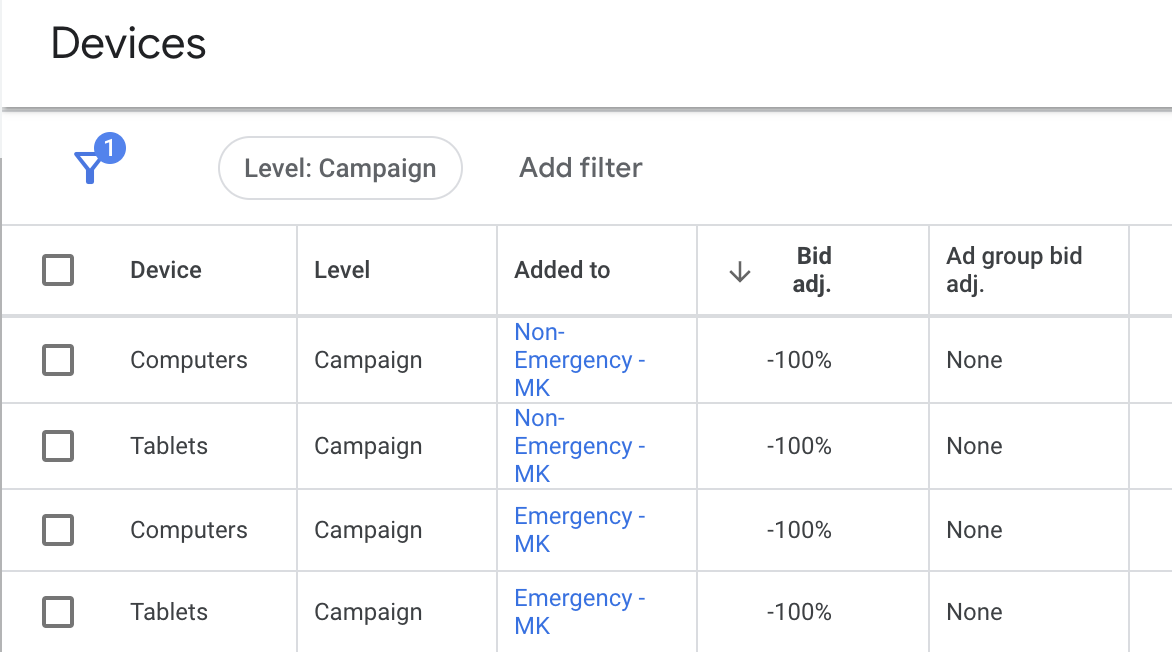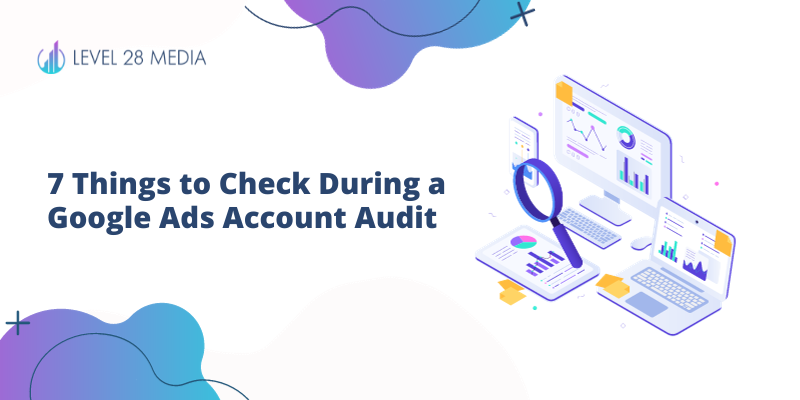When conducting a Google Ads account audit, it’s essential to keep a keen eye out for red flags that can hurt your campaign’s performance.
From using incorrect keyword match types without the proper safeguards and bidding strategies to poor conversion tracking, these red flags can waste tons of money and it may even cause you to lose faith in PPC advertising and digital marketing!
Google Account Audit Red Flags: What’s Hurting Your Account?
1. Heavy Reliance On Broad Match Keywords
Heavy reliance on broad match keywords in a pay-per-click (PPC) advertising campaign can be a significant red flag.
Broad match is a keyword match type that allows your ads to show for a wide range of searches that contain any word in your keyword, in any order, and any other synonyms.
While broad match has its merits in driving a lot of traffic and clicks, it can become problematic when used unchecked since unrelated or low-intent searches can trigger your ads. For example, if you’re selling a premium service, broad match will capture searches that include “free” or “cheap”.
That’s definitely not what you want!
This inefficiency leads to a lot of wasted ad spend, especially for campaigns with a budget below $10,000 per month.
To use broad match effectively, it should be mixed in with other keyword types. You also need a robust negative keyword list to filter out irrelevant searches and reduce wasted spend.
2. Heavy Reliance On Automated Bid Strategies
Heavy reliance on automated bid strategies like Maximize Conversions can be a red flag, especially when it’s used in a brand new account.
These automated strategies are highly effective when they can draw from a large amount of historical performance data to optimize bidding. However, for brand new campaigns, there is not enough data for automated bidding to work.
Typically, new campaigns should start with manual bidding, so there is more control and flexibility in the early stages of the campaign.
It’s also common for automated bidding strategies to be used incorrectly.
For example, let’s say you use Maximize Conversions and set a small daily spend limit. Google won’t be able to find the relevant clicks and traffic for your ad quickly, resulting in poor performance.
Similarly, setting an overly aggressive target cost-per-acquisition (CPA) can also lead to Google struggling to find traffic or conversions at such a low cost. You’ll probably find yourself with low quality leads as well.
It’s crucial not to “set and forget” with automated bid strategies. Ongoing monitoring and adjustments are essential to ensure that the bidding strategy aligns with campaign goals and performance metrics.
3. Running Campaigns on a Small Budget
Running a PPC campaign on an inadequately small budget (for example: $15 per day) can be a significant red flag.
If you are in a highly competitive industry like law or healthcare, your campaign will not be able to gain momentum. Implementing a low budget will be like trying to drive a car with an empty fuel tank. You simply won’t have the resources needed to gather the essential data and traction required for a successful campaign.

PPC advertising often demands a substantial upfront investment. You should always be thoroughly forecast and assess whether it aligns with your specific business goals and budget constraints before starting any campaign.
Want to learn more about setting the right budget? Check out this article of ours!
4. Not Using Location Exclusions
The absence of location exclusions can be a glaring red flag during a Google Ads campaign audit.
While your business might serve a specific geographic area, without location targeting, your ads could be shown to people thousands of miles away. This oversight can result in wasted ad spend and poor ROI.
If you decide to target a large area, it doesn’t mean you have to serve ads to every city. If there are certain cities or zip codes where your business doesn’t serve, you can exclude these cities with location exclusions.
It’s essential to remember that Google’s location targeting isn’t flawless. Sometimes, your ads may be served to people who aren’t within your specified area. This can happen when Google identifies users who frequently visit a location relevant to your business, even if they don’t reside there.
You can also implement the “People in or frequently in my location” option. This ensures that your ads are shown to individuals within your service area and not to users located far away.
In addition to setting up location exclusions, consider adding locations you don’t want to target to your negative keyword list. This helps ensure that your ads won’t be displayed to users searching for services or products in areas where you don’t operate or want to focus.
5. Sending Traffic to a Poorly Built Website or Landing Page
Sending traffic to a poorly built website or landing page is like inviting guests to a housewarming party when your home is still incomplete and without furniture!
When you direct potential customers to a poorly built landing page, you’re paying for clicks and traffic that are unlikely to convert.
Imagine a user clicks on your ad and is interested in your product or service. But they are met with a website that lacks basic elements like a contact form or a call-to-action.
A well-structured landing page includes elements like:
- social proof
- contact form for inquiries
- mobile-friendly design
- content that precisely matches the ad’s message.
This helps lower exit rates but also pushes your target audience to convert into a real inquiry.
6. No Device Targeting Bid Adjustments
One often-overlooked red flag is the absence of device bid adjustments. Ideally, you want to bid more on devices that drive desired traffic and conversions and implement negative bid adjustments on less desirable devices like tablets.

For businesses in the B2C sector, mobile traffic is critical conversions. With the increasing use of smartphones, many consumers prefer to shop, research, and make purchasing decisions on their mobile devices. By not adjusting bids for mobile traffic, you are likely missing out on a significant portion of potential conversions.
If your business operates in the B2B realm, desktop traffic is where you should focus your bid adjustments. Professionals in business settings typically use desktop computers for research, decision-making, and transactions.
7. Poor Conversion Tracking
Conversion tracking is what allows you to measure success and identify the number of conversions coming from your campaigns.
Without comprehensive tracking in place, you’re essentially operating with blind spots. You might see a campaign’s click-through rate and other metrics, but you won’t have a clear picture of what’s happening after users interact with your ads.
If phone calls are a critical part of your business, implement call tracking to get the full picture of the value of calls generated through your ads. This includes call quality and the effectiveness of your lead-handling process.
Do You Need a Professional Google Ads Account Audit?
This article shares quite a few things you can check with your account to ensure it’s on the right track. However, it can be complex and time consuming for a small business owner to do on their own.
You will likely need a few reviews of your account in order to fully catch everything. If you need to thorough review your account, contact Level 28 Media for a discovery call and Google Ads Audit.

Michelle Kop is a marketing consultant and award-winning pay-per-click marketing strategist. She has over 8 years of professional paid advertising experience in Google and Microsoft Ads, with a specialization in lead generation for B2B and B2C companies.
After working in corporate marketing with Fortune Global 500 Brands like Toyota and BP, Michelle founded Level 28 Media, a lead generation micro-agency for small to medium businesses.


